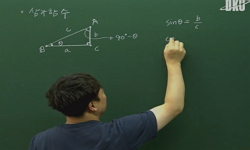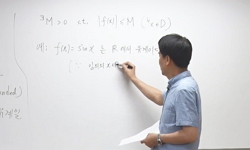In the late Middle Ages, the theme of Danse macabre, or the Dance of Death, was prevalent throughout Europe. Under the powerful emblem of memento mori, Danse macabre spread rapidly through European art, literature, drama and visual examples. But the D...
http://chineseinput.net/에서 pinyin(병음)방식으로 중국어를 변환할 수 있습니다.
변환된 중국어를 복사하여 사용하시면 됩니다.
- 中文 을 입력하시려면 zhongwen을 입력하시고 space를누르시면됩니다.
- 北京 을 입력하시려면 beijing을 입력하시고 space를 누르시면 됩니다.
https://www.riss.kr/link?id=A99660837
- 저자
- 발행기관
- 학술지명
- 권호사항
-
발행연도
2013
-
작성언어
Korean
-
주제어
죽음의 무도 ; 기요 마르샹 ; 중세 ; 텍스트와 이미지 ; 해석 ; Danse macabre ; Guyot Marchant ; Middle Ages ; Text and image ; interpretation
-
KDC
800
-
등재정보
KCI등재
-
자료형태
학술저널
-
수록면
35-74(40쪽)
-
KCI 피인용횟수
1
- 제공처
- 소장기관
-
0
상세조회 -
0
다운로드
부가정보
다국어 초록 (Multilingual Abstract)
In the crossroads of various areas, the theme of Danse macabre continued to enjoy greatpopularity, in particular using the myriad of visual and literary forms. But the Danse macabre reduces and expands its repertoire of characters and contents and makes a significant transition to other topics, for instance the reflection of sin, repentance, corruption, gender, fortune, divine providence and salvation, leaving possibility to be multi-dimensional interpretation and the implications of a new angle. The aims of our study is to introduce in detail, for the first time in Korea, the structure and content of Danse macabre of Men, published by Guyot Marchant in 1486 and to examine the relationship between text and woodcut images in this edition. By analyzing the opposition between the living and dead, the ambiguity between the bodily postures and dialogues, the conflict between the didactic voice and the theatrical body language, we can understand the implications of the two conflicting modes of view, moving in satire from didactics and vice versa in the 1486 edition of Guyot Marchant. Through a follow-up study on the Danse macabre of women, we can make another opportunity for understanding about the ‘continuity’ and ‘alterity’ of the Middle Ages.
In the late Middle Ages, the theme of Danse macabre, or the Dance of Death, was prevalent throughout Europe. Under the powerful emblem of memento mori, Danse macabre spread rapidly through European art, literature, drama and visual examples. But the Dance of Death resembling ‘gaudy carnival’, in which all social ranks in descending order dances all together, did not stay to repeat ceaselessly one simple ontological distillation: the inevitable fate of mankind, or death conquers all.
In the crossroads of various areas, the theme of Danse macabre continued to enjoy greatpopularity, in particular using the myriad of visual and literary forms. But the Danse macabre reduces and expands its repertoire of characters and contents and makes a significant transition to other topics, for instance the reflection of sin, repentance, corruption, gender, fortune, divine providence and salvation, leaving possibility to be multi-dimensional interpretation and the implications of a new angle. The aims of our study is to introduce in detail, for the first time in Korea, the structure and content of Danse macabre of Men, published by Guyot Marchant in 1486 and to examine the relationship between text and woodcut images in this edition. By analyzing the opposition between the living and dead, the ambiguity between the bodily postures and dialogues, the conflict between the didactic voice and the theatrical body language, we can understand the implications of the two conflicting modes of view, moving in satire from didactics and vice versa in the 1486 edition of Guyot Marchant. Through a follow-up study on the Danse macabre of women, we can make another opportunity for understanding about the ‘continuity’ and ‘alterity’ of the Middle Ages.
참고문헌 (Reference)
1 Wisman, Josette A, "Un miroir déformant: hommes et femmes des Danses macabres de Guyot Marchant" 23 : 275-299, 1993
2 Taylor, Jane H. M, "The dialogues of the Dance of Death and the limits of late-medieval theatre" 16 : 215-232, 1990
3 Dubruck, Edelgard, "The Theme of Death in French poetry of the Middle Ages and the Renaissance" Mouton & Co 1964
4 Harrison, Ann Tukey, "The Danse macabre of Women" The Kent State UP 1994
5 Gertsman, Elina, "The Dance of Death in the Middle Ages" Brepols 2010
6 Clark, James M, "The Dance of Death in Medieval Literature" 45 : 336-345, 1950
7 Kürtz, L. P, "The Dance of Death and the Macabre Spirit in European Literature" Columbia UP 1934
8 Sansy, Danièle, "Texte et image dans les incunables français" 22-23 : 47-70, 1992
9 Mackenbach, Johan P, "Social Inequality and Death as Illustrated in Late-Medieval Death Dances" 85 : 1285-1292, 1995
10 Peignot, G, "Recherches historiques et littéraires sur les danses de morts et sur l’origine des cartes à jouer" Dijon-Paris 1826
1 Wisman, Josette A, "Un miroir déformant: hommes et femmes des Danses macabres de Guyot Marchant" 23 : 275-299, 1993
2 Taylor, Jane H. M, "The dialogues of the Dance of Death and the limits of late-medieval theatre" 16 : 215-232, 1990
3 Dubruck, Edelgard, "The Theme of Death in French poetry of the Middle Ages and the Renaissance" Mouton & Co 1964
4 Harrison, Ann Tukey, "The Danse macabre of Women" The Kent State UP 1994
5 Gertsman, Elina, "The Dance of Death in the Middle Ages" Brepols 2010
6 Clark, James M, "The Dance of Death in Medieval Literature" 45 : 336-345, 1950
7 Kürtz, L. P, "The Dance of Death and the Macabre Spirit in European Literature" Columbia UP 1934
8 Sansy, Danièle, "Texte et image dans les incunables français" 22-23 : 47-70, 1992
9 Mackenbach, Johan P, "Social Inequality and Death as Illustrated in Late-Medieval Death Dances" 85 : 1285-1292, 1995
10 Peignot, G, "Recherches historiques et littéraires sur les danses de morts et sur l’origine des cartes à jouer" Dijon-Paris 1826
11 Taylor, Jane H. M, "Que signifiait danse au quinzième siècle? Danser la Danse macabré" 18 : 259-277, 1991
12 Taylor, Jane H. M, "Poésie et prédication. La fonction du discours proverbial dans la Danse macabre" 14 (14): 215-226, 1989
13 Oosterwijk, Sophie, "Of Dead Kings, Dukes and Constables: The Historical Context of the Danse Macabre in Late Medieval Paris" 161 : 131-162, 2008
14 Champollion-Figeac, J.-J, "Notice d’une édition de la Danse macabre antérieure à celle de 1486 et inconnue aux bibliographes" Magasin encyclopédique 355-369, 1811
15 Götz, Luise, "Martial d’Auvergne: La Dance des Femmes" 58 : 318-334, 1934
16 Huizinga, J, "L’Automne du moyen âge" Payot 1975
17 Mâle, E, "L’Art religieux de la fin du Moyen Age en France" A. Colin 1925
18 Corvisier, André, "Les danses macabres" P. U. F 1998
19 Chartier, Roger, "Les arts de mourir, 1450-1600" ESC 51-75, 1976
20 Saugnieux, Joël, "Les Danses macabres de France et d’Espagne et leurs prolongements littéraires" Les Belles Lettres 1972
21 Ruelle, Pierre, "Le temps, la vie, la mort dans la conception médiévale" 43 (43): 103-121, 1985
22 Villon, François, "Le Testament Villon" Droz 1974
23 Schneegans, F, "Le Mors de la Pomme" 46 : 537-570, 1920
24 Tenenti, Alberto, "La vie et la mort à travers l’art du XVe siècle" Serge Fleury 1983
25 Wisman, Josette A, "La symbolique du miroir dans les Dances macabres de Guyot Marchant" 103 : 157-171, 1991
26 Vaillant, Pierre, "La danse macabre de 1485 et les fresques du charnier des Innocents" 6 : 81-86, 1975
27 Lacroix, Paul, "La danse macabre : histoire fantastique du X Ve siècle" E. Renduel 1832
28 Harrison, Ann Tukey, "La Grant Dance Macabre des Femmes" 3 : 81-91, 1980
29 Dufour, V, "La Danse macabre des Saints Innocents de Paris d’après l’édition de 1484, précédée d’une étude sur le cimetière, le charnier et al fresque peinte en 1425" Léon Willem 1874
30 Chaney, Edward F, "La Danse Macabré des Charniers des Saints Innocents à Paris" Manchester UP 1945
31 Beaune, Colette, "Journal d’un Bourgeois de Paris de 1405 à 1449" L. G. F 1990
32 Fein, David A, "Guyot Marchant’s Danse Macabre. The Relationship Between Image and Text" Mirator Elokuu 1-11, 2000
33 Siciliano, I, "François Villon et les thèmes poétiques du moyen âge" A.-G. Nizet 1933
34 Arden, Heather, "Fool’s Plays, In A study of satire in the sottie" Cambridge UP 1980
35 Ariès, Philippe, "Essais sur l’histoire de la mort en Occident du Moyen Age à nos jours" Seuil 1975
36 Langlois, E.-H, "Essai historique, philosophique et pittoresque sur les danses des morts, 2 vol" A. Lebrument 1851
37 Blakeslee, Merritt R, "Eros and Thanatos: The Erotic Element in the Macabre Tradition In Continental Art and Literature of the Fifteenth Centuty" 3 : 1-20, 1980
38 Hammond, Eleanor Prescort, "English Verse between Chaucer and Surrey" Octagon Books 1965
39 Wemple, Suzanne F, "Death’s dance of women" 12 : 333-343, 1986
40 Dubruck, Edelgard, "Death: Poetic Perception and Imagination (Continental Europe), In Death and Dying in the Middle Ages" Peter Lang 295-309, 1999
41 Boase, T. S. R, "Death in the Middle Ages" McGraw-Hill Book Company 1972
42 Sankovitch, Tilde, "Death and the Mole: Two Fifteenth Century Dances of Death" 2 : 211-217, 1979
43 Cohen, John, "Death and The Danse Macabre" 32 : 35-40, 1982
44 Taylor, Jane H. M, "Danse macabré and bande dessinée: a question of reading" 25 : 356-369, 1989
동일학술지(권/호) 다른 논문
-
- 한국외국어대학교 외국문학연구소
- 신주철(Shin, Jucheol)
- 2013
- KCI등재
-
- 한국외국어대학교 외국문학연구소
- 오영주(Oh, Youngju)
- 2013
- KCI등재
-
“Hermaphrodites Representing Nothing”
- 한국외국어대학교 외국문학연구소
- Yoon, Hyejoon(윤혜준)
- 2013
- KCI등재
-
- 한국외국어대학교 외국문학연구소
- 이시준(Lee, Sijun)
- 2013
- KCI등재
분석정보
인용정보 인용지수 설명보기
학술지 이력
| 연월일 | 이력구분 | 이력상세 | 등재구분 |
|---|---|---|---|
| 2027 | 평가예정 | 재인증평가 신청대상 (재인증) | |
| 2021-01-01 | 평가 | 등재학술지 유지 (재인증) |  |
| 2018-01-01 | 평가 | 등재학술지 유지 (등재유지) |  |
| 2015-01-01 | 평가 | 등재학술지 유지 (등재유지) |  |
| 2011-01-01 | 평가 | 등재학술지 유지 (등재유지) |  |
| 2009-01-01 | 평가 | 등재학술지 유지 (등재유지) |  |
| 2007-01-01 | 평가 | 등재학술지 유지 (등재유지) |  |
| 2004-01-01 | 평가 | 등재학술지 선정 (등재후보2차) |  |
| 2003-01-01 | 평가 | 등재후보 1차 PASS (등재후보1차) |  |
| 2001-07-01 | 평가 | 등재후보학술지 선정 (신규평가) |  |
학술지 인용정보
| 기준연도 | WOS-KCI 통합IF(2년) | KCIF(2년) | KCIF(3년) |
|---|---|---|---|
| 2016 | 0.37 | 0.37 | 0.3 |
| KCIF(4년) | KCIF(5년) | 중심성지수(3년) | 즉시성지수 |
| 0.31 | 0.3 | 0.703 | 0.1 |




 KCI
KCI 스콜라
스콜라







